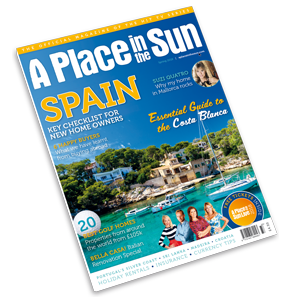
One Euro House in Italy? Here Are the Pros & Cons
Italy, renowned for its rich history, picturesque landscapes, and vibrant culture, has attracted people from around the globe for centuries. In recent years, a unique trend has emerged in certain Italian towns – desperate to repopulate dwindling or so called ‘ghost towns’, local authorities are selling houses for as little as one euro.
While this might sound like an irresistible opportunity, it’s essential to weigh the pros and cons before diving into such a purchase.
Let’s explore both sides of the coin.

One Euro Houses in Italy
The Pros:
Affordability: At just one euro, the initial cost of acquiring these homes is incredibly low. This affordability opens doors for individuals or families who dream of owning property in Italy but may have been deterred by high prices elsewhere.
Renovation Potential: Many of these one euro houses are in need of significant renovation. For those with a knack for DIY projects or a passion for restoration, this presents an exciting opportunity to create a personalised living space while preserving a piece of history.
Immersion in Italian Culture: Purchasing a home in a traditional Italian village allows for an immersive cultural experience. Residents often find themselves integrated into tight-knit communities, participating in local festivals, and embracing a slower, more relaxed way of life.
Potential Return on Investment: While the upfront cost is minimal, investing in the renovation of a one euro house could yield substantial returns in the long run. As these towns attract more attention from tourists and property buyers, the value of renovated properties may appreciate significantly.
Escape to Tranquility: Many of these towns are located in rural or semi-rural areas, offering a serene escape from the hustle and bustle of city life. For those seeking peace and tranquility, these one euro houses provide an ideal retreat.
SIGN UP FOR MORE INFO

One Euro Houses in Italy
The Cons:
Renovation Costs: While the initial purchase price is low, the cost of renovating a one euro house can quickly add up. Since many of these houses have fallen into disrepair and have outdated systems, structural repairs, plumbing, electrical work, and modernisation efforts can turn into a significant investment, potentially exceeding the value of the property.
Bureaucratic Challenges: Navigating the legal and bureaucratic processes involved in purchasing and renovating a property in Italy can be complex and time-consuming. Language barriers and unfamiliar legal systems may further complicate matters for international buyers. Furthermore, one euro houses come with a set of stringent rules that must be adhered to. For example, in addition to the initial one euro fee, a sizeable deposit must be put down as a commitment to carrying out renovation works to the property – usually within a given timeframe as set by the local authorities.
Location Limitations: Many of these one euro houses are situated in remote or economically depressed areas, lacking amenities such as schools, healthcare facilities, or employment opportunities. This could pose challenges for those accustomed to urban conveniences.
Cultural Adjustment: Integrating into a small Italian village may not be as idyllic as it seems. Language barriers, cultural differences, and a lack of familiarity with local customs can make assimilation challenging for newcomers. Also, as many of these properties are marketed towards foreign buyers, a buyer could end up owning a home in a town with very few Italians residing there.
Potential Hidden Costs: Beyond renovation expenses, there may be additional costs associated with property taxes, utilities, maintenance, and insurance. Prospective buyers should carefully consider these ongoing expenses before committing to a purchase.
READ MORE RENOVATING IN ITALY
SIGN UP FOR MORE INFO

In conclusion, while the allure of owning a one euro house in Italy is undeniable, it’s essential to approach such an investment with careful consideration. For those with a sense of adventure, a love for restoration projects, and a willingness to embrace the unknown, purchasing a one euro house could be a rewarding endeavour. However, prospective buyers must weigh the pros and cons, conduct thorough research, and assess their financial and lifestyle goals before taking the plunge into buying a one euro house in Italy.
Remember, while the price tag may be one euro, the true cost of owning a piece of Italian history goes far beyond mere euros.

 ✅ View homes for sale with our real estate agents
✅ View homes for sale with our real estate agents










